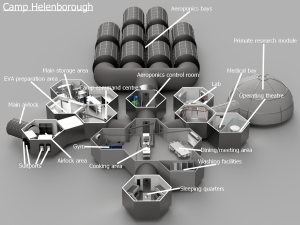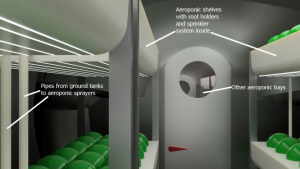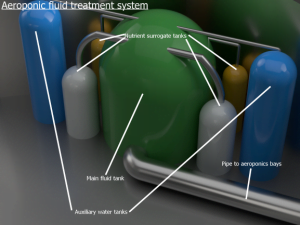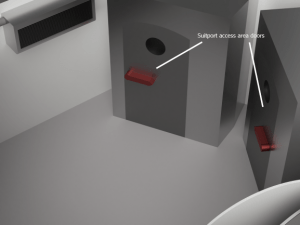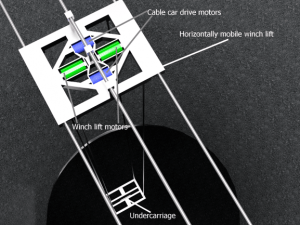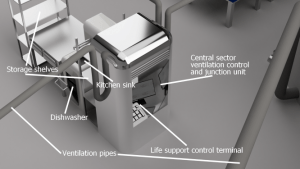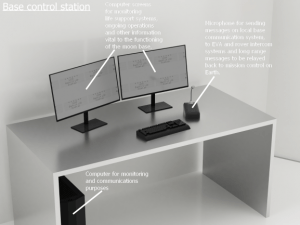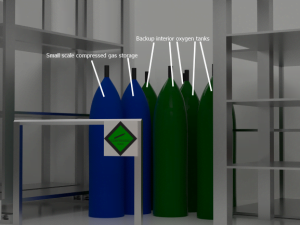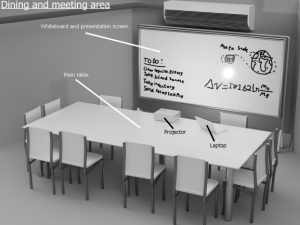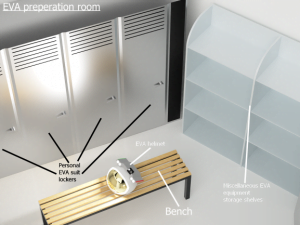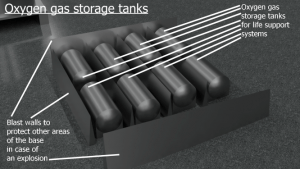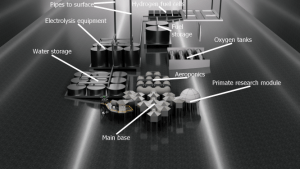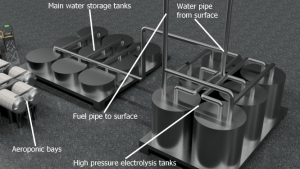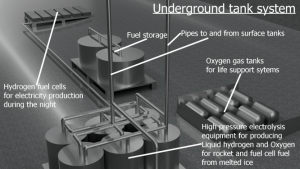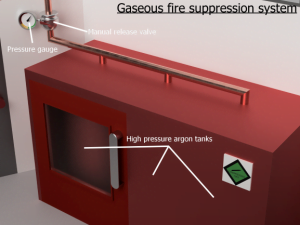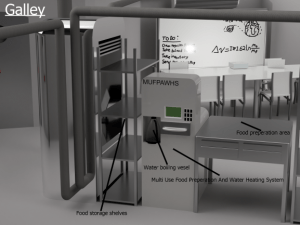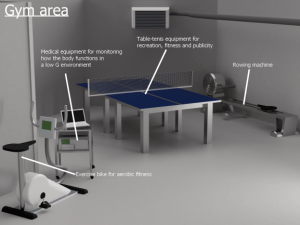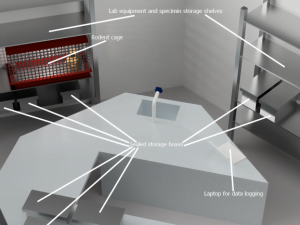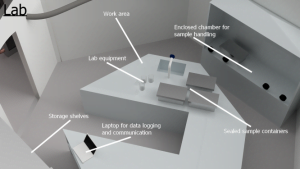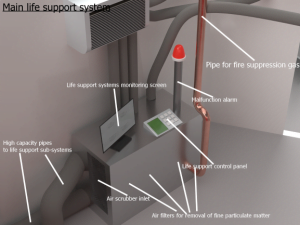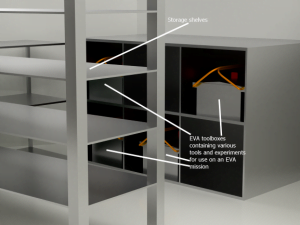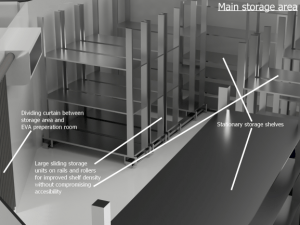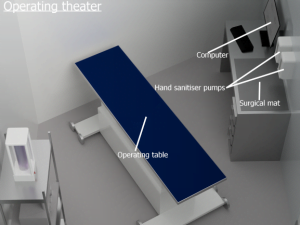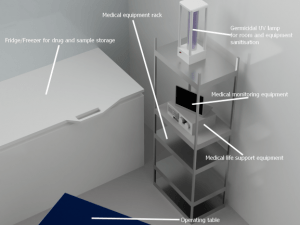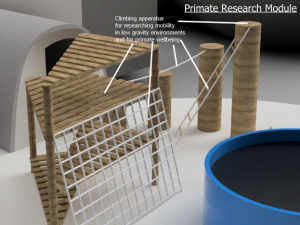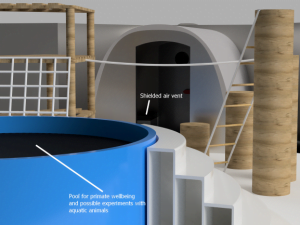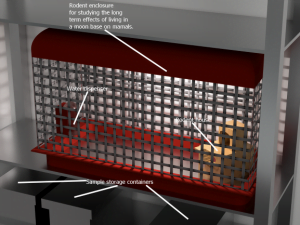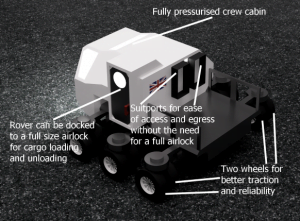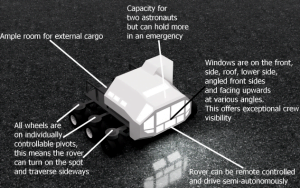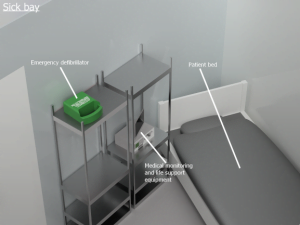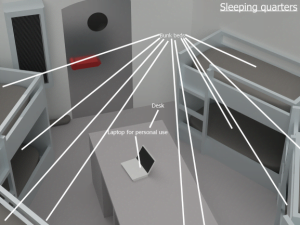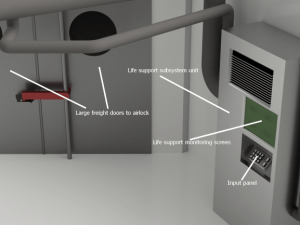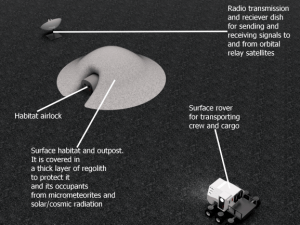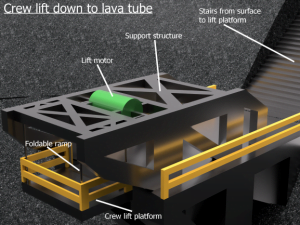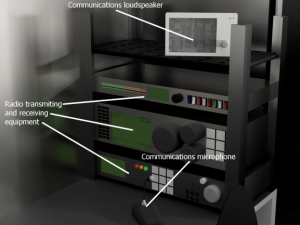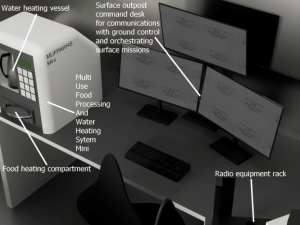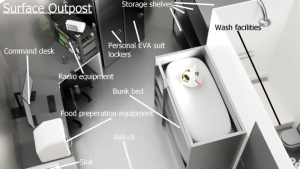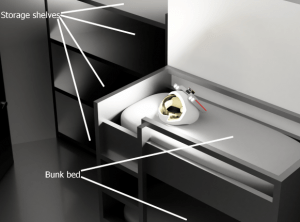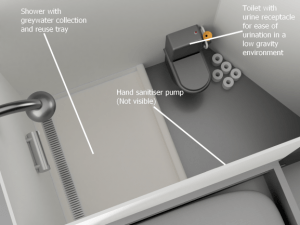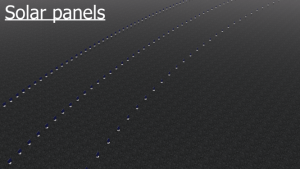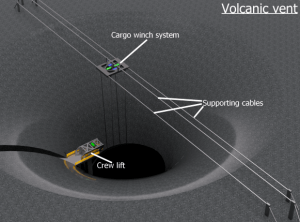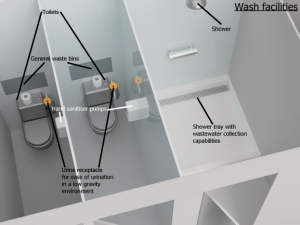Moon Camp Pioneers Gallery 2020-2021
In Moon Camp Pioneers each team’s mission is to 3D design a complete Moon Camp using Fusion 360. They also have to explain how they will use local resources, protect astronauts from the dangerous of space and describe the living and working facilities.
Team: Camp Helenborough
Nidderdale High School & Community College Pately Bridge United Kingdom 15
External viewer for 3d project
|
Project description
Our Moon habitat is designed to be the first long-term human colony on the moon, acting as a starting point for further colonization and human utilisation of the moon’s resources.
Its primary objectives are to:
The establishment of a colony on the Moon would be a monumental achievement for humanity and would inspire a new generation of Engineers, Scientists and Astronauts to carry the torch of humanity to new worlds. The Habitat would act as a foundation for further human development of the moon and exploitation of its resources. |
|||
|
Where do you want to build your Moon Camp?
We have opted to build our Habitat in Schrodinger Crater. We have chosen this site as it has an abundance of lava tubes and a relatively flat surface within the inner ring; which is good for future developments on the surface.
It’s also close to the south pole and Shackleton Crater. It would be advantageous to construct the base near the poles as there is thought to be ice there, which can be processed into usable water.
Schrodinger Crater is one of the few sites on the Moon that shows signs of recent geological activity, this is a great opportunity for further research into the moon’s geological composition and development. Schrodinger Crater has lava tubes under its surface which can provide a natural subterranean area for base construction. This is advantageous as constructing a base underground offers protection from solar radiation and micrometeorites. How do you plan to build your Moon Camp? Describe the techniques and materials you would use.
The camp will be constructed from uniform modules separated by airtight doors. This makes construction of the base and maintenance easier. It also makes the base modular which means expansion can be done with relative ease.
The walls of the habitat will be constructed using uniform rectangular titanium panels shipped from Earth. These panels will be welded together using electron welding techniques. Electron welding is advantageous over other welding methods as it does not require any gasses and works in a vacuum. The roof will be constructed in a similar way but with triangular panels. The foundations will be built using titanium beams and the floors will be constructed out of uniform aluminium plates.
Some larger modules such as the aeroponics bays must be constructed from inflatable modules. This is because it would be very hard to ship base modules of this size to the moon. The walls will have multiple layers for added safety. Each layer will have individual sensors so pressure can be monitored and leakages can be noticed before they grow. The walls will be supported by steel poles. Using inflatable modules also makes delivery and construction easier. The only issue is that these modules cannot be used as main base compartments due to safety concerns.
Heavy equipment shall be assembled on-site. Large interior equipment will be moved inside the base by settlers before assembly, this is to avoid potential complications with moving equipment through airlocks. Interior equipment will be assembled when the base is fully pressurised. The environment on the Moon is very dangerous for the astronauts. Explain how your Moon Camp will protect them.
To protect the habitat from radiation and micrometeorites, it will be constructed within a lava tube. Each section of the base is separated by airtight doors so other areas are protected in case one compartment suffers a pressurisation failure. The habitat has a medical bay with an operating theatre. Inhabitants will be able to evacuate to a surface outpost in case of emergency.
The habitat life support can control airflow to each compartment individually. This is required so if there is an emergency in one section of the base the operational sections can still function without the ventilation system posing a risk.
The habitat is also equipped with a fire suppression system. If a fire is detected, the life support system can flood the compartment with argon gas to reduce the oxygen concentration and extinguish the fire. This will not damage sensitive equipment. Any inhabitants will need to evacuate beforehand. Explain how your Moon Camp will provide the astronauts with:
|
|||
|
Water
|
Food
|
Electricity
|
Air
|
|
Surveys will be conducted using a satellite equipped with a neutron spectrometer to find a suitable location to harvest Ice. Once a location has been found the ESA’s prospect system will land and begin ice harvesting. A rocket will be used to transport ice from the extraction site to the base, where it will be processed. The ice shall then be stored in tanks where it will be melted by solar radiation. Electrolysis and a pressurised system will be used to provide oxygen and hydrogen which shall be used as rocket fuel, breathing air and fuel for hydrogen fuel cells. |
For food, we will use an aeroponics system for crop growth. Aeroponics is advantageous over other crop-growing methods as it does not require soil and it uses less water compared to hydroponics. |
Electricity will be produced and stored using different methods throughout the day. When it is the lunar day, solar panels will be used to produce electricity. Electrolysis will produce hydrogen and oxygen during the day. Hydrogen and oxygen gas will be stored for the use of hydrogen fuel cells as solar panels cannot operate during the night. Electrolysis equipment will only be powered during the day to avoid a hydrogen deficit. This is because it takes more energy to produce the hydrogen for fuel cells than the energy released from the hydrogen in the fuel cells. |
Initially, sources of Oxygen will have to be imported from Earth. After a short period, local production of oxygen can start via the electrolysis of water. The on-premise growth of plants will help improve air quality. Air will be circulated using a base-wide ventilation system that ensures carbon dioxide is filtered from the air and does not cause a dangerous build-up. Nitrogen, or another similar inert gas, is needed as a diluent to ensure that the atmosphere of the habitat isn’t dangerously oxygen-rich. Diluents will need to be imported from Earth. |
|
Explain what would be the main purpose of your Moon Camp (for example: commercial, scientific, and/or tourist purposes).
Camp Helenborough, named after astronaut Helen Sharman, will primarily focus on the scientific study and exploration of the Moon. It would yield valuable scientific discoveries, not only for the ESA but also international collaborators. Valuable experience will also be gained from the long-term missions on the camp. These experiences would prove invaluable to those working towards putting the first humans on Mars and other celestial bodies.
This mission is inherently risky so there will be no tourist opportunities in the early stages. However, in the future, there may be opportunities for some civilian visits, similar to past paid visits to the ISS.
There may also be opportunities for commercial expansion of the base e.g. landing and refuelling of commercial spacecraft on route to Mars and beyond or perhaps exporting rare materials found on the moon. But these missions would need to be carefully assessed and planned out beforehand. |
|||
|
Describe a day on the Moon for your Moon Camp astronaut crew.
At 7 AM CET, the day shift will wake. Central European Time has been chosen as the ESOC (European Space Operations Center) uses this timezone and it is the timezone that most ESA astronauts will be aligned to. After getting up, they will dress and use the washroom facilities – then eat breakfast before beginning their shifts. Crews will work on 2-hour shifts separated by recreational breaks every four hours. Crews working inside the main habitat will also monitor critical systems such as life support and electricity. Each astronaut will be on duty for 12 hours a day but this won’t be constant work, they will have recreational breaks and a lunch break to ensure they aren’t overworked. Rotary sleep schedules will be used to ensure that there are at least 2 inhabitants, one of which will be a systems specialist, awake at all times. This is to ensure all systems are constantly observed and unscheduled maintenance can be performed at any time if necessary. The habitat has a gym area with two resistive exercise machines that use mechanisms as a resistive force instead of gravity. One is a rowing machine which will be used to maintain upper body strength and muscle mass, the other machine is an exercise bicycle which will be used to maintain cardiovascular and aerobic fitness as well as strength and preventing bone and muscle atrophy. Inhabitants will all have a designated time where they have access to the exercise equipment in the gym. This is essential to ensure that their muscles and bone structures do not degrade due to lower gravity. During recreational time inhabitants will have access to their own personal laptops, each of which will have 500GB of personal media. During the overlap between shift changes, inhabitants will have time to work on team-building activities to boost morale and co-operation. During this time they will also cook and eat their evening meal/breakfast together. Briefings will be given by shift leaders to make sure any necessary information is relayed to the next shift and to formally mark the opening/ending of their daily shift in the mission logs. |
|||


